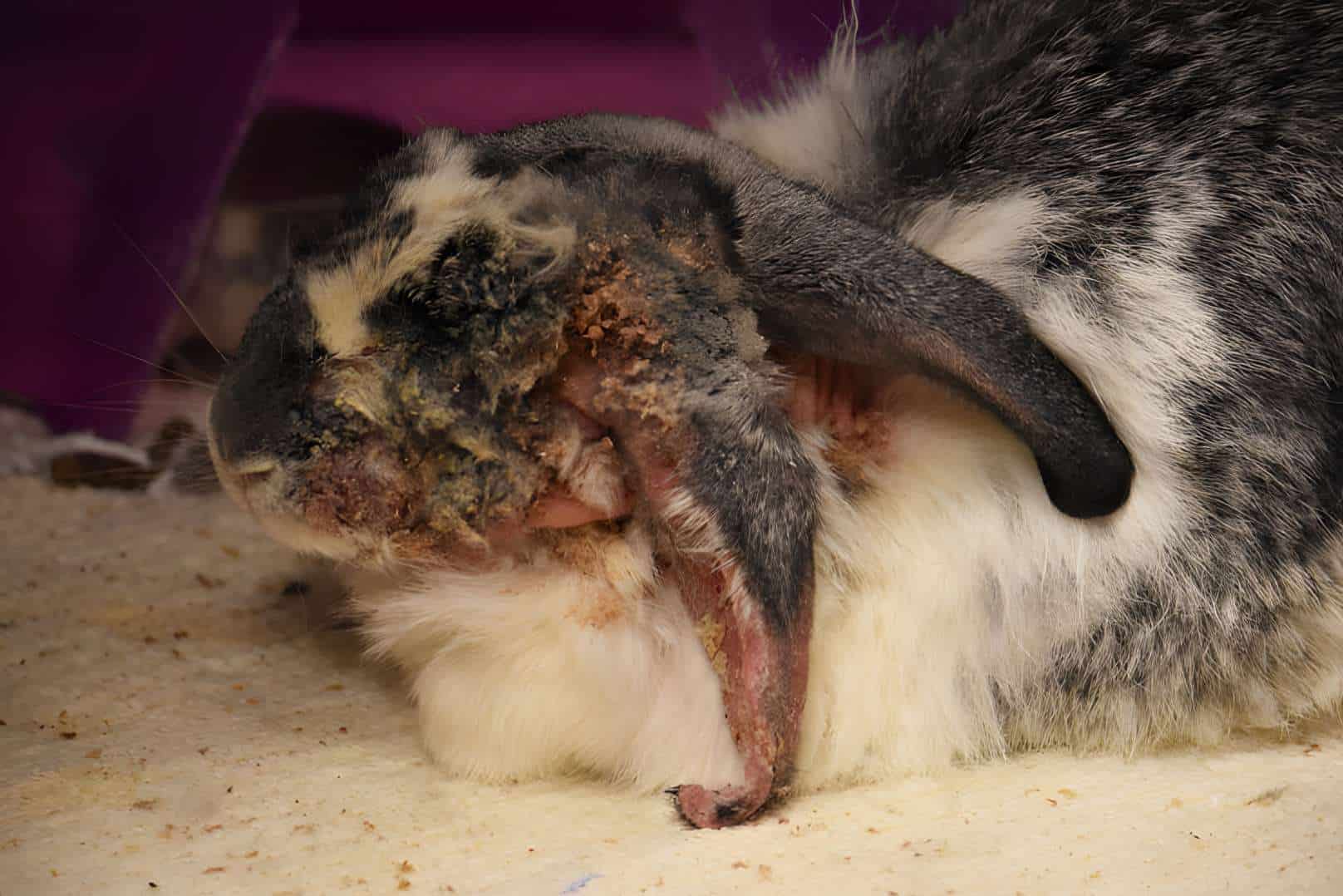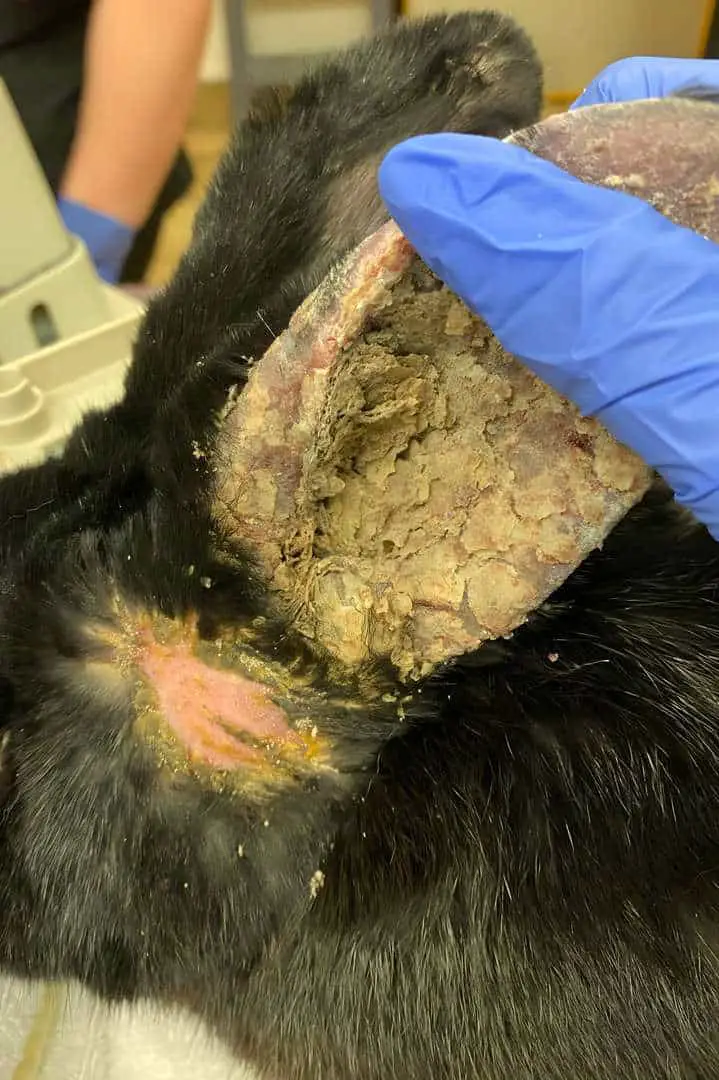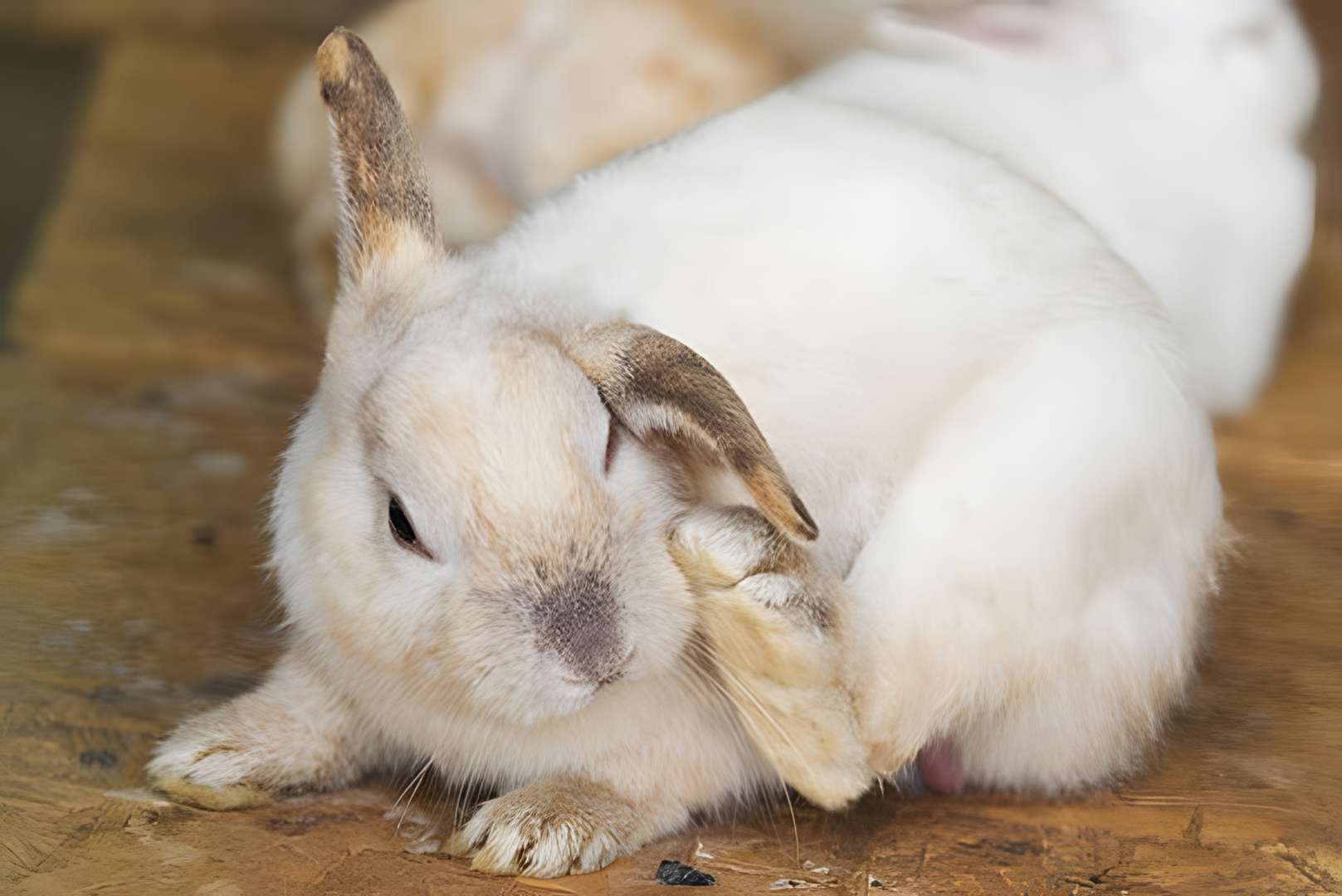Treating Ear Mites in Rabbits
Rabbits are known for their adorable ears. But their ears can be infected by ear mites. If the owner fails to take action, an infestation of ear mites occurs.
Knowing the symptoms will provide the best treatment. Learn more about ear mites in rabbits: symptoms, causes, treatment, recovery, cost, prevention.
Symptoms of Ear Mites in Rabbits

The infestation starts with the inner part of rabbit ears which is not exposed. You will notice that your rabbit is infected when experiencing intense itching.
The scratching begins in the innermost section of its ear. Unlike its normal behavior, you will also notice that the rabbit tilts and shakes its head.
Once you touch the infected ear, you may feel thick, firm debris. If the irritation kicks off, the skin of the infected rabbit will begin to get crusty.
It will also produce flaky dead skin. When the ear mites burrow into the skin of the rabbit, it will cause painful skin inflammation. If the rabbit continues to scratch the sensitive parts, there will be wounds and patches of its furs.
You will also notice the discomfort that your rabbit is going through. It will begin to lose its appetite, and soon it will lead to weight loss. If left untreated, this will cause second bacterial infections. It will result in foul smells of the ear, hearing loss, and seizure.
When ear mites reach the inner part of the ear close to the brain’s nerves, it will also cause the rabbit to go off-balance. You may also notice that the normal upright ear will flop down.
Causes of Infestation

Ear mites are parasites that infect rabbits’ ears. More than 10,000 mites can infest a single ear if the infection is severe. When fully grown, these parasites are visible to the human eye.
They have an oval-shaped body with short legs and long suckers. These mites needed to find a host so they could multiply.
Once they lay their eggs in the ear wax or the dead skin of its host, eggs will hatch every ten days. The newly-hatched mites spend four weeks of their life cycle in the ear canal. After that, they spread on the face and the body.
The rabbits can get the mites from their beddings. Aside from that, an infected rabbit can transmit the ear mites to another rabbit. These mites find a new host by crawling.
Places where rabbits get ear mites are in muti-rabbit households and pet stores. Mite eggs can also be present in wood chips, grass, and straw bedding materials.
Treatment and Proper Care to a Rabbit with Ear Mites

If you notice the symptoms, consult a veterinarian immediately for ear examination. The vet will perform an otoscope to check the condition of the ear of the rabbit. A sample will also be taken to determine the spread of the infection so that the eggs can be eliminated.
After the check-up, a prescribed medication will be given to your rabbit. Don’t worry because the vet will ensure that the medicine won’t have any toxic reaction to the rabbit.
The vet will suggest injections or oral doses of ivermectin and anti-inflammatories. These are more effective than topical drugs.
Some preferred medications use systematic treatments to avoid repeat dosages. These kinds of treatments are less harmful. They also prevent severe infestation of the mites. Combining ivermectin and topical acaricides can also be used and are recommended.
As much as possible, let the experts do their job of diagnosing the infected rabbit. Never try home remedies since they may only worsen your pet’s situation. Rabbit’s ears are sensitive, and the wrong procedure can lead to severe infection. They may also suffer from hearing loss.
Put the rabbit for 4 to 6 weeks of treatment. It is best to dispose of its used and contaminated beddings during this time. They may still have ear mites in them.
Change the beddings of your rabbit regularly and replace them with fresh ones. Don’t forget to keep the environment clean while your rabbit is treated. Plus, ensure they are eating a proper diet.
Recovery and Cost

After the medication, keep an eye on the recovery of your pet. You must regularly check within two weeks after its treatment if there is a sign of skin scaling. Also, observe its behavior if it stops or continues to scratch due to itching.
Removing the dead skin caused by the ear mites is extremely painful for rabbits. Instead of doing this, let the infection be treated by medication alone.
The crust will fall off, and the rabbit’s skin will heal naturally. New layers of skin will grow out without any discomfort for your rabbit.
Once the fur grows again and the skin is entirely back to normal, start grooming your rabbit again. If the case is severe, the cost of treating this infestation can reach from $100 up to $200.
Aside from the medication, your rabbit may spend a month at the vet clinic for treatment and recovery. You will also have to set up new a home for the rabbit if mites have infested its cage.
If the case of your rabbit is not severe, you may only spend up to $10 for the medication. Depending on your location, the vet may also perform ear cytology that may cost you about $25 to $40.
It is a procedure needed to check if there are many white cells or bacteria in the infected area.
Preventing Ear Mites

Your rabbit can be infested by ear mites if preventive measures are not conducted. To prevent this from happening, separate the affected rabbit from the other rabbits.
You can create a temporary home to isolate the infectious rabbit. Ear mites can live up to 21 days and survive without a host. There is a high possibility that the parasite will return or its eggs are still present.
Replace the contaminated homes, especially if the ear mites have already infested them. You also need to clean and maintain your rabbit’s environment to prevent re-infection.
Plus, keep the air circulating freely in the rabbits’ cages. Ear mites quickly multiply in wet places. If you have a new rabbit, check if it doesn’t have parasites before introducing it to other rabbits.
Don’t wait until another infestation occurs. Instead, groom your rabbit correctly to prevent this from happening. Clean the rabbit’s ears with wipes or a soft cloth.
Gently wipe them to prevent waxes to clogged in. You can also use drops of baby oil to lubricate the ear, removing any mites stuck inside.
If you notice symptoms again, call a veterinarian for cage checking and sanitation. Follow the advice given and ask for another way of medication.
It is recommended that you bring your rabbit at least once a month to make an appointment with a vet. Schedule it for ear cleaning and physical examination.
Frequently Asked Questions
What is the life cycle of the ear mites?
An ear mite without a host can live for four to 21 days, depending on its environment. Once it finds a host, it will lay its eggs on the ear wax or the dead skin of the host.
The eggs will hatch after four days and then molt after another four days. Next, the larvae will turn into protonymphs for three to ten days then molt into adults.
How do ear mites transmit?
Ear mites transmit by crawling to their host. The suitable place it can multiply is if there is already a pre-existing moist dermatitis. Another way an ear mite can go to a new host is when its eggs or larvae fall due to shaking or scratching.
What can I do to prevent re-infection?
You can prevent the re-infection by conducting decontamination of its cage. Also, ensure that the treatment of the infected rabbit lasts for 21 days. It will ensure that the ear mites and eggs have fallen off.
What will happen if I fail to treat the ear mites of my rabbit?
If you fail to treat your rabbit, it may lead to an ear mite infection. The rabbit will suffer from gut stasis, weight loss, and secondary bacterial infections.
If the worse occurs, the condition may result in the rupture of the neurological system. As much as possible, treat ear mites during the early symptoms.
Is regular ear cleaning required?
For healthy rabbits, regular ear cleaning is not required. But if your rabbit is prone to build ear wax easily, you should clean its ears regularly. Ear mites usually multiply on ear wax so removing it is necessary.
Summary
Instead of watching your rabbit suffer from ear mites, it is better to prevent it from occurring. Ear mites can be prevented through proper grooming and regular check-ups.
Also, you must provide a clean environment for it. Understanding the ear mites in rabbits: symptoms, causes, treatment, recovery, cost, prevention helps.